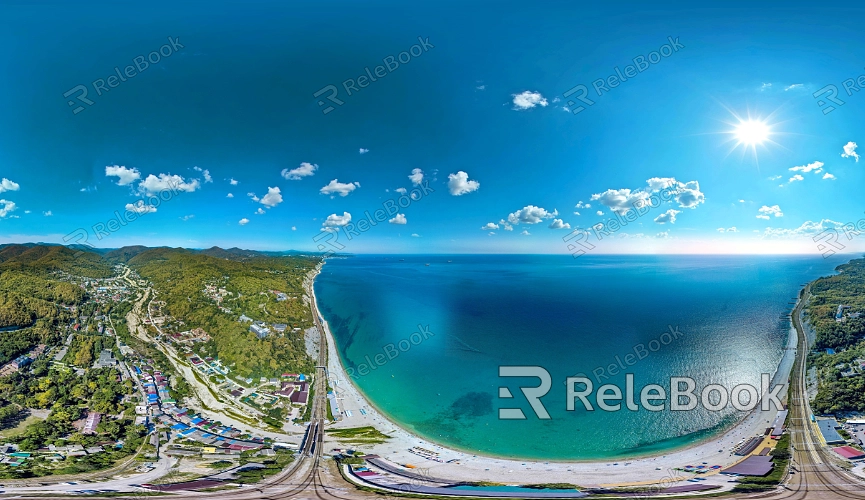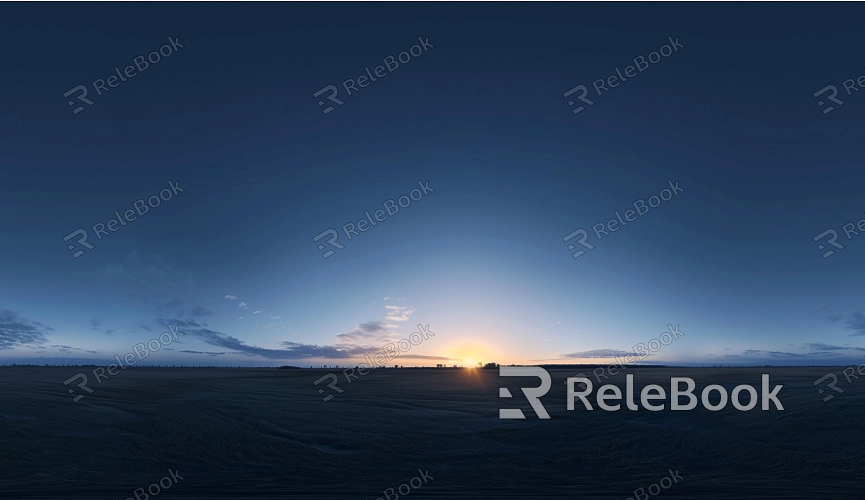What Does HDR Effect Mean
The HDR effect is widely used in fields such as architectural visualization, game development, and movie special effects to help designers create scenes with more depth and detail. Despite its frequent appearance in these areas, the exact meaning and specific applications of the HDR effect can still be a bit unclear for many designers. This article will explore the definition of HDR effect, its use cases, and its role in 3D software like Blender, 3ds Max, and Cinema 4D.

1.Definition and Working Principle of HDR Effect
The Concept of HDR Effect: HDR, or High Dynamic Range, is a technique used to enhance visual effects by expanding the range of brightness and color in an image. Traditional images often struggle with overexposed highlights or lost details in shadows in high-contrast scenes. The HDR effect, however, retains more detail in both bright and dark areas, making images more realistic under various lighting conditions.
Implementation of HDR Effect: HDR is typically achieved by combining multiple photos or rendered images with different exposures. These images capture the full range of details from the darkest to the brightest parts of a scene, resulting in an HDR image with a broader range of brightness. This image can then be used in 3D software to create more complex and realistic lighting effects.
2.Application Scenarios of HDR Effect
Architectural Visualization: In architectural visualization, the HDR effect is often used to simulate real lighting environments, especially in interior design and building exteriors. By using the HDR effect, designers can more accurately replicate the effects of natural and artificial light, making rendered images closer to the actual architectural outcomes.
Game Development: In game development, HDR is used to create dynamic lighting and environmental effects. For example, HDR helps to implement day-night cycles in game scenes, adding depth and realism. Through HDR, game developers can offer players a more immersive visual experience.
Movie Special Effects: The HDR effect plays a crucial role in movie special effects production. By simulating complex lighting conditions, such as direct sunlight, reflected light, and other light sources, HDR can help special effects artists create more lifelike scenes, resulting in stunning and vivid visuals.
3.Application of HDR Effect in 3D Software
In Blender: As a popular open-source 3D modeling software, Blender supports the extensive use of HDR. Designers can import HDR images into Blender for environment lighting or background sky settings, enhancing the realism of the scene.
In 3ds Max: 3ds Max, a professional 3D modeling and animation software, is widely used in architecture, game development, and animation. By using HDR images in scenes, designers can achieve more natural and detailed lighting effects, reducing unnatural light and shadow transitions during rendering.
In Cinema 4D: Cinema 4D, another powerful 3D software, also supports the use of HDR. Through Cinema 4D's rendering engine, designers can apply HDR images to scene lighting and background environments, enabling more precise control over light and shadow effects and achieving high-quality rendering results.

4.Advantages of HDR Effect
Enhanced Realism in Lighting: The HDR effect significantly improves the lighting effects in a scene, making light and shadow transitions smoother and more natural. Designers can avoid the harsh cuts often seen with traditional lighting techniques, resulting in images with better depth and realism.
Improved Detail Representation: HDR preserves more image details, especially in highlights and shadows. This means that under various lighting conditions, the rendered image can showcase a rich level of detail, enhancing the overall quality of the work.
Increased Color Accuracy: By extending the brightness and color range of an image, the HDR effect allows designers to more accurately replicate real-world lighting and colors. This makes the final rendered image more vivid and true-to-life.
5.Optimizing HDR Effect
Choosing the Right HDR Image: Selecting the appropriate HDR image based on project needs is crucial. For example, nighttime scenes may require low-light HDR images, while daytime scenes need high-brightness HDR images. Designers should choose suitable HDR resources based on the characteristics of the scene to ensure the best rendering results.
Adjusting HDR Image Parameters: In 3D software, designers can adjust parameters such as exposure, contrast, and color mapping of the HDR image to better match the lighting needs of the scene. Proper parameter settings can effectively enhance the overall rendering quality.
6.Practical Application of HDR Effect in Projects
Real-time Preview and Adjustment: Many 3D software programs offer real-time preview features for HDR effects, allowing designers to adjust HDR parameters before rendering to ensure the final result meets expectations. This real-time feedback helps save time and increase productivity.
Combining with Other Lighting Techniques: HDR is often used in conjunction with other lighting techniques, such as global illumination and ambient occlusion. By integrating these technologies, designers can create more realistic and complex lighting effects.
By thoroughly understanding and properly applying the HDR effect, 3D designers can significantly enhance the quality and realism of lighting in their rendering projects. If you are looking for high-quality HDR images, 3D models, or other design materials, consider visiting Relebook. Relebook offers a wealth of design resources to help you tackle challenges in various design projects and elevate your work's effectiveness.

